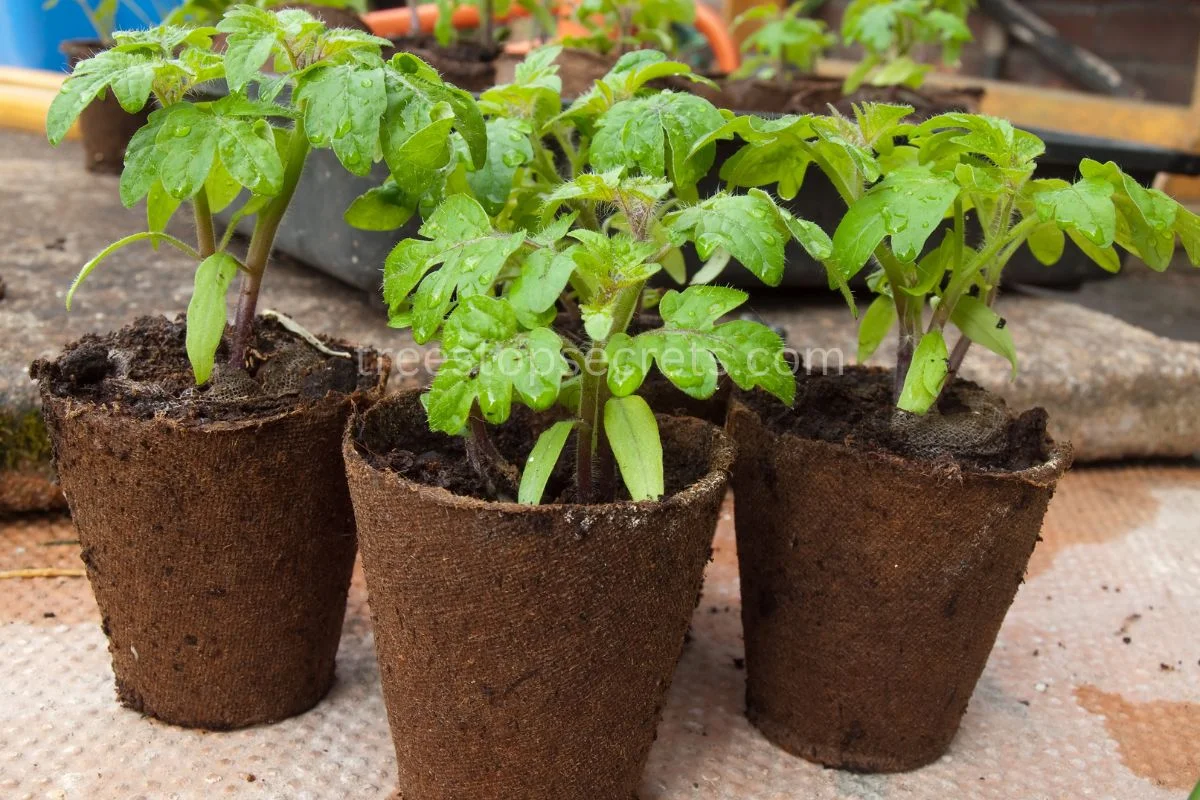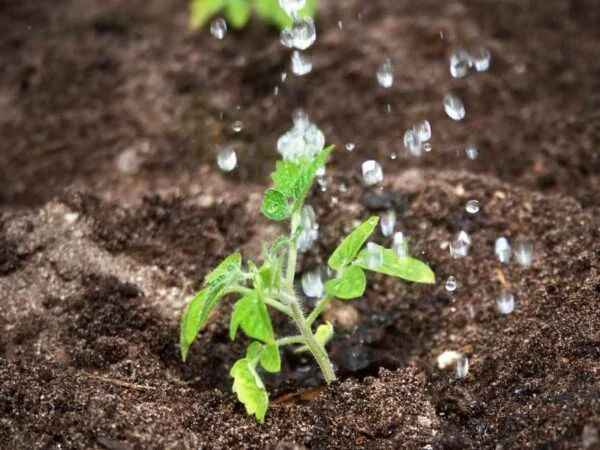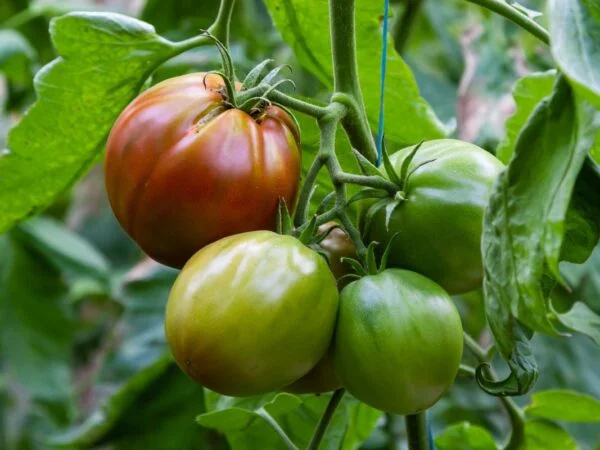Ever wondered how to grow beefsteak tomatoes in pots? Imagine the convenience of having a bountiful harvest of juicy, flavorful tomatoes right on your patio or balcony, with garden soil, water, and a gallon container. The benefits of growing beefsteak tomatoes in containers are plentiful – from saving space to easier maintenance. These luscious fruits have a rich history, dating back through generations of cultivation. With a simple plan and just a few inches of soil, you can grow tomatoes anywhere around your home.
Understanding Beefsteak Tomatoes
Beefsteak tomatoes are known for their large, meaty fruits with few seeds. They have a rich, sweet flavor profile that makes them perfect for slicing and adding to sandwiches or salads. Beefsteak tomatoes from the garden have thick skin and dense flesh, giving them a firm texture that holds up well in cooking.
When growing beefsteak tomatoes in pots, it's important to consider the specific characteristics of these tomatoes and water. Their size and density mean small tomato plants require adequate space and support as they grow. The thickness of their skin also means they can withstand water and handling better than other varieties.
Varieties
There are several varieties of beefsteak tomatoes, including heirloom options like Brandywine and Mortgage Lifter. These heirloom varieties often boast unique flavors and colors, making them popular choices among gardeners looking for something different.
Hybrid beefsteak tomato options such as Big Beef or Better Boy offer disease resistance while still delivering the classic beefsteak taste. It's essential to choose the variety that best suits your preferences and growing conditions when cultivating these flavorful fruits in pots.
Determining whether you want to grow determinate or indeterminate types is also crucial when selecting a beefsteak tomato variety for pot cultivation. Determinate types tend to be more compact and bushy, making them suitable for smaller containers. Indeterminate types continue to grow taller throughout the season; thus requiring larger pots or sturdy supports.
Nutritional Value
In addition to their delicious taste, beefsteak tomatoes pack a nutritional punch too! They are high in vitamin C content which is essential for immune function and overall health. Furthermore, they are an excellent source of antioxidants that help protect cells from damage caused by free radicals.
What's even better is that beefsteak tomatoes are low in calories and fat but high in fiber - making them an ideal choice if you're looking to maintain a healthy diet without sacrificing flavor.
Benefits of Container Gardening
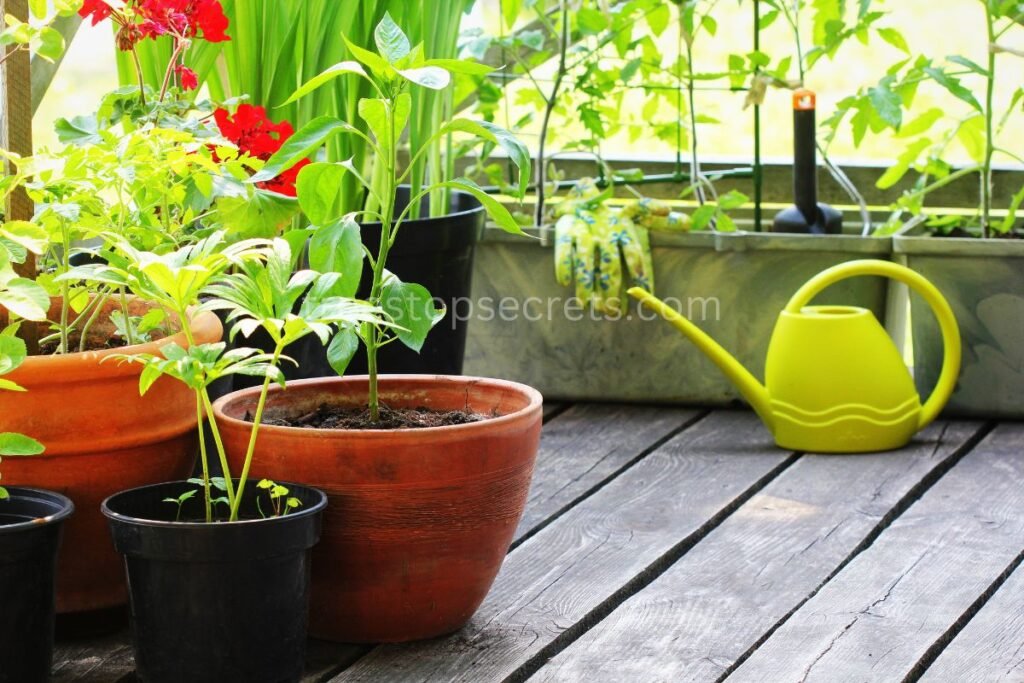
Space Efficiency
Growing beefsteak tomatoes in pots offers significant benefits, especially for individuals with limited outdoor space. For those living in apartments or homes with small gardens or balconies, container gardening is an ideal solution. By utilizing containers, gardeners can make the most out of their restricted outdoor areas. This method is particularly advantageous for urban dwellers who are keen on pursuing gardening despite spatial constraints.
By opting for container gardening, individuals can effectively maximize their limited outdoor space. Instead of needing a dedicated plot of land, they can strategically place gallon containers filled with soil and grow beefsteak tomatoes without worrying about overcrowding or lack of suitable planting areas.
Container gardening also proves to be highly suitable for urban settings where traditional gardening may not be feasible due to space limitations. This method allows city residents to engage in the joys of cultivating beefsteak tomatoes without the need for large garden plots.
Pest Control
When growing beefsteak tomatoes in pots, pest control becomes more manageable as compared to traditional ground planting methods. Natural pest repellents such as marigolds and basil can be conveniently grown alongside the tomato plants within the same container, serving as effective companion plants that help deter harmful pests.
Moreover, organic pest control methods such as neem oil sprays and insecticidal soaps are easily applicable when maintaining potted tomato plants. These natural remedies offer an environmentally friendly approach to managing pests while ensuring that the beefsteak tomatoes thrive healthily within their confined environment.
Portability
One notable advantage of growing beefsteak tomatoes in pots is the portability it offers. Pots can be effortlessly moved around to ensure optimal sunlight exposure throughout different times of the day or year. This flexibility enables gardeners to cater specifically to each plant's sunlight requirements without being constrained by fixed garden beds or plots.
Furthermore, this portability proves convenient during changing weather conditions; if unexpected frost or extreme heat occurs, potted tomato plants can swiftly be relocated indoors or into shaded areas for protection against adverse weather elements.
The ability to move potted plants also makes container gardening highly suitable for renters or frequent movers who may need to relocate frequently due to housing changes.
Choosing the Right Pot
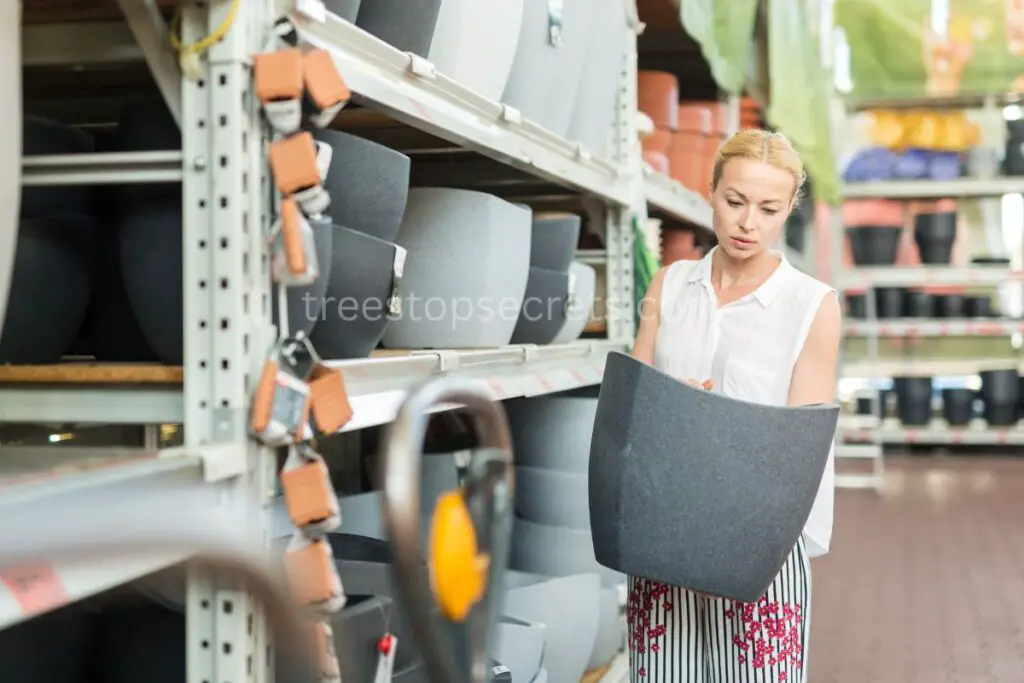
Size Matters
When growing beefsteak tomatoes in pots, it's crucial to choose the right pot size. The pot size directly impacts the plant's growth and overall health. A larger pot provides more room for root development, leading to healthier and more productive tomato plants. However, a pot that is too large can hold excess moisture, potentially causing root rot.
For beefsteak tomatoes specifically, a 5-gallon (18-20 liters) container is ideal. This allows ample space for the roots to spread out while also preventing waterlogging issues. It strikes a balance between providing sufficient root space and ensuring that the container size doesn't lead to overly wet soil conditions.
Material Types
When considering pots for beefsteak tomatoes, different materials offer various advantages. Plastic pots are lightweight, affordable, and retain moisture well. However, they may not provide adequate breathability for the roots and can degrade over time when exposed to sunlight.
On the other hand, terracotta containers offer excellent breathability and prevent water buildup around the roots due to their porous nature. They are durable but can be heavy and may require more frequent watering than plastic pots.
Fabric grow bags are another option worth considering due to their superior drainage capabilities and air pruning of roots which prevents them from becoming root-bound like traditional pots might.
Drainage Essentials
Proper drainage is essential when cultivating beefsteak tomatoes in pots as it prevents waterlogged soil which can lead to root rot or fungal diseases such as blight. Ensuring that your chosen pot has adequate drainage holes at its base will facilitate proper water flow through the soil while preventing standing water. Using gravel or broken pottery shards at the bottom of your pot before adding soil helps improve drainage by creating an airspace at the base of your container.
Soil and Fertilization
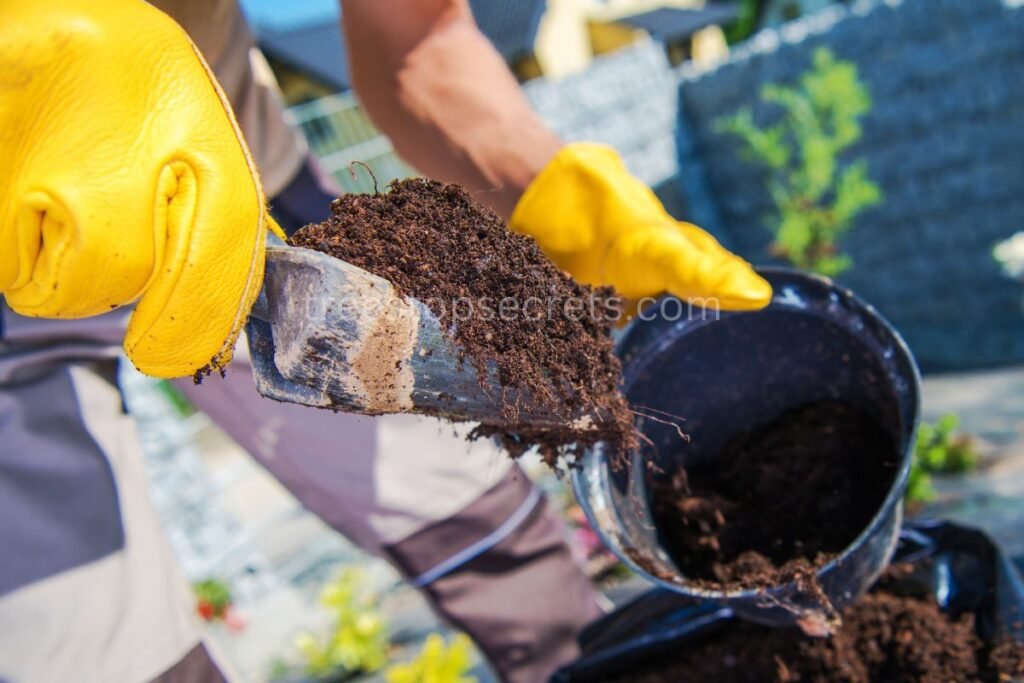
Soil Composition
When growing beefsteak tomatoes in pots, it's crucial to create a well-draining potting mix. This helps prevent waterlogging, which can lead to root rot. A balanced soil composition is essential for providing the necessary nutrients and promoting proper aeration for healthy root development. Incorporating organic matter into the potting mix supports robust root growth and overall plant health.
To achieve an ideal soil composition, consider using a combination of garden soil and ground coconut coir or peat moss. These materials help improve drainage while retaining moisture, creating an optimal environment for beefsteak tomatoes to thrive in pots.
Fertilizer Types
Selecting the right NPK fertilizers is key to supporting the growth of beefsteak tomatoes in pots. Balanced fertilizers with equal parts nitrogen (N), phosphorus (P), and potassium (K) are essential for promoting healthy foliage, flowers, and fruit development. Organic fertilizer options such as compost or fish emulsion provide natural nutrients that enhance soil quality and support long-term plant health.
Controlled-release fertilizers offer several benefits when cultivating beefsteak tomatoes in containers. They provide a steady supply of nutrients over an extended period, reducing the frequency of application while ensuring consistent nourishment for the plants.
Feeding Schedule
Establishing a regular feeding schedule is vital for sustaining the nutrient requirements of beefsteak tomatoes throughout their growth stages. During periods of active growth and fruit production, these plants benefit from frequent feeding to support their high nutritional demands.
Adjusting the feeding frequency based on different growth stages ensures that beefsteak tomatoes receive adequate nourishment at critical points in their development cycle. For instance, increasing fertilizer applications during flowering and fruit set stages can bolster yield potential while maintaining overall plant vigor.
Planting Beefsteak Tomato Seeds
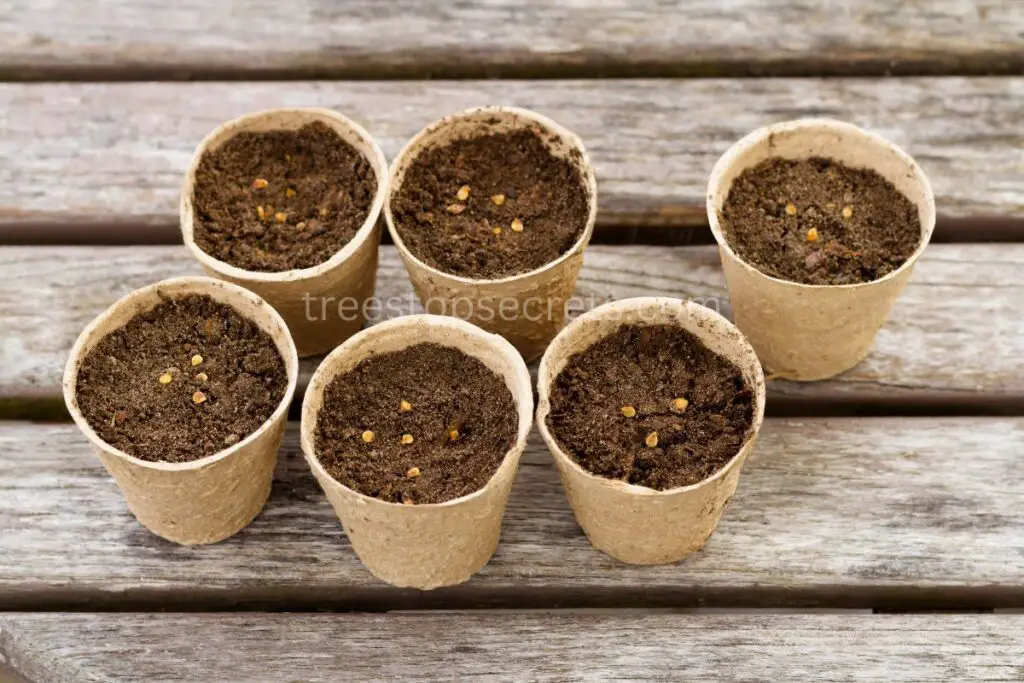
Seed Selection
Selecting the right seeds is crucial. Opt for high-quality tomato seeds, specifically beefsteak variety, known for their large size and rich flavor. Look for reputable seed suppliers or nurseries to ensure the quality of your seeds.
Be sure to check if the selected tomato plants are indeterminate. Indeterminate varieties continue producing fruit throughout the growing season, making them ideal for container gardening. Consider choosing compact or small tomato plants suitable for pot cultivation.
It's essential to choose seeds that align with your climate and local weather conditions. Selecting tomato varieties suited to your specific region can significantly impact the success of your tomato plant growth.
Germination Process
After acquiring the appropriate beefsteak tomato seeds, kickstart the germination process by planting them in a sterile seed-starting mix within small containers or seedling trays.
Carefully follow instructions regarding seed depth and spacing provided on the seed packet. Ensure that each planted seed receives adequate moisture and warmth to facilitate germination.
Place the seeded containers in a warm location with indirect sunlight until signs of sprouting emerge from the soil. Once germinated, move them under direct sunlight or provide artificial light using grow lamps if natural light is insufficient.
To maintain optimal moisture levels during germination, cover seeded containers with plastic wrap or use a humidity dome until sprouts appear above ground level.
Transplanting Seedlings
Once your beefsteak tomato seedlings have grown sturdy enough (typically 6-8 weeks after sowing), they are ready for transplanting into larger pots. Prepare spacious containers with drainage holes at their base to prevent waterlogging - an essential requirement when cultivating tomatoes in pots. Gently remove each young plant from its initial container without damaging its delicate roots before transferring it into its new home. When repotting small tomato plants, bury them deeper than they were initially planted; this encourages stronger root development and stability as they mature. Provide support structures like stakes or cages early on as these indeterminate tomatoes will require assistance once they start bearing fruit.
Sunlight and Watering Needs
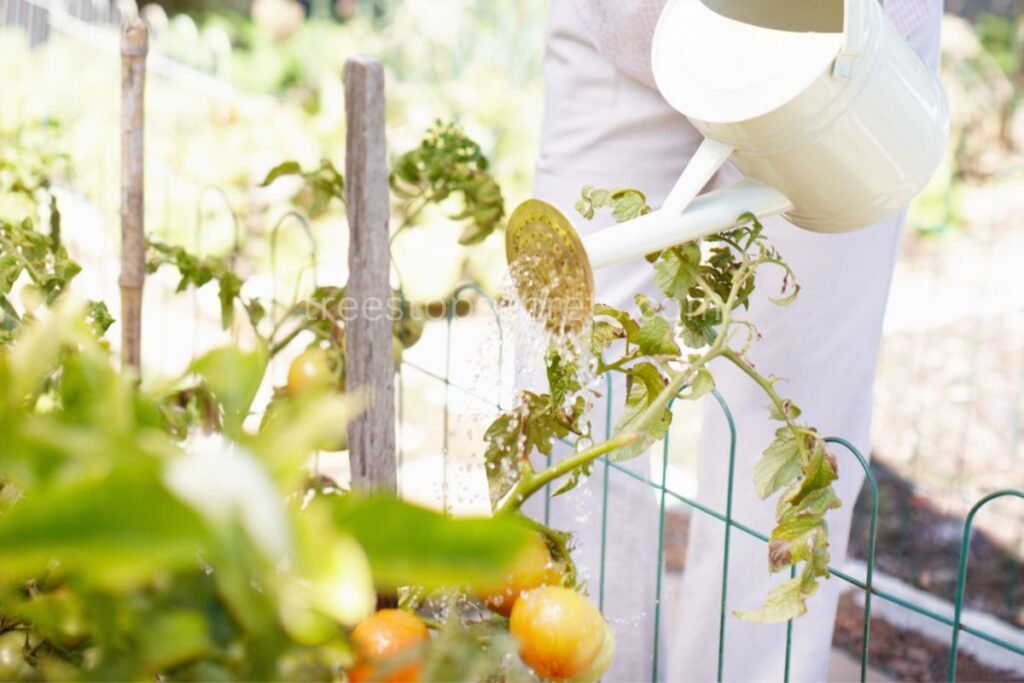
Sunlight Hours
Beefsteak tomatoes thrive in full sunlight, requiring at least 6-8 hours of direct sun exposure daily. When growing them in pots, ensure that the containers are placed in a spot where they can receive ample sunlight throughout the day. This could be on a sunny patio, balcony, or any area with unrestricted access to sunlight.
The seedlings need consistent light exposure to develop into healthy plants. If you're unable to provide natural sunlight due to weather constraints or limited outdoor space, consider using grow lights indoors. These artificial lights mimic natural sunlight and help maintain the required light levels for your beefsteak tomato plants.
Watering Techniques
It's crucial to strike a balance. Overwatering can lead to root rot, while under-watering can cause stunted growth and poor fruit development. The key is to keep the soil consistently moist but not waterlogged.
To achieve this balance, use the "finger test" - stick your finger into the soil about an inch deep; if it feels dry at that depth, then it's time to water your plants. Opting for self-watering pots or adding a layer of mulch on top of the soil helps retain moisture and reduces the frequency of watering needed.
Humidity Considerations
In regions with high humidity levels or during rainy seasons, excessive moisture can pose a risk by promoting diseases like blight and fungal infections among beefsteak tomato plants. To mitigate this risk when growing them in pots:
- Ensure proper air circulation around your potted plants.
- Avoid overcrowding multiple containers together as this restricts airflow.
- Use well-draining potting mix that prevents water from accumulating around plant roots.
- Prune lower leaves regularly to increase airflow within the plant canopy.
Staking and Support
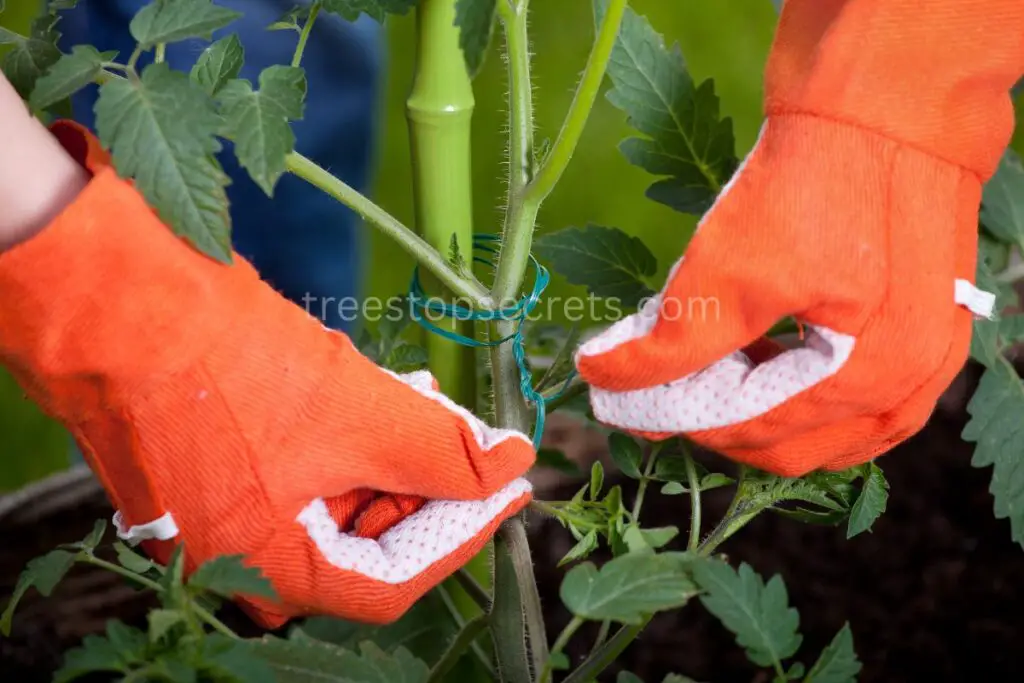
Cage vs Stake
Gardeners often have to choose between using a cage or a stake. A cage provides 360-degree support for the plant, allowing it to grow freely without much intervention. On the other hand, a stake requires more attention as the plant needs to be tied regularly for proper support.
Using a cage is beneficial if you want minimal maintenance and prefer a hands-off approach. It allows the tomato plant to naturally grow within its confines without needing constant adjustments. However, if space is limited, using a stake might be more practical as it takes up less room while still providing essential support for the tomato plant's stems.
Pruning Practices
Proper pruning practices are crucial when growing beefsteak tomatoes in pots. Regularly removing suckers - small shoots that develop between the main stem and branches - helps direct energy towards fruit production rather than excessive foliage growth. By eliminating these unnecessary growths, you encourage better airflow around the plants and reduce the risk of diseases such as blight.
Pruning also prevents overcrowding within your pot or container which can lead to competition for nutrients among different parts of the plant. This ensures that each part of your beefsteak tomato receives an adequate amount of water and nutrients necessary for healthy growth.
Tying Techniques
When supporting beefsteak tomatoes with stakes or cages, employing appropriate tying techniques is essential in preventing damage to their delicate stems. Using soft materials like twine or fabric strips reduces abrasion on the stems while providing sufficient support.
One effective technique involves gently wrapping ties around both the stake and main stem in loose loops at regular intervals instead of tightly binding them together. This method supports but does not constrict growth; ensuring that there's enough flexibility for natural movement while maintaining stability.
Common Pests and Diseases
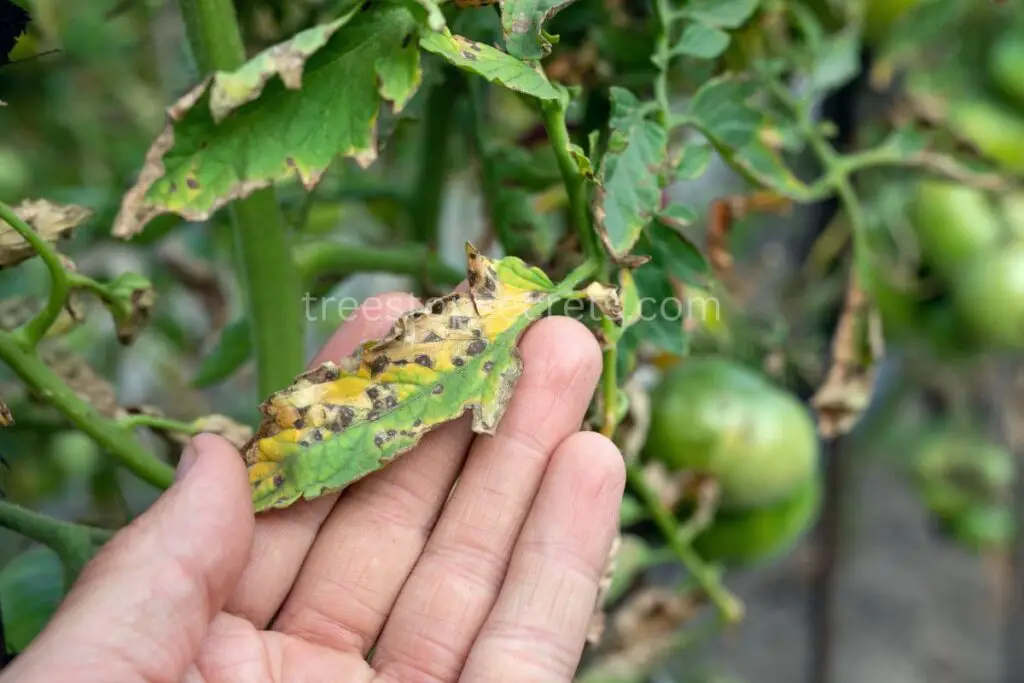
Pest Identification
Beefsteak tomatoes grown in pots are susceptible to several pests that can damage the plants. One common pest is the aphid, which appears as tiny, soft-bodied insects clustering on the undersides of leaves. Another potential threat is the whitefly, small flying insects that feed on plant juices and cause yellowing of leaves. Watch out for spider mites, which are not visible to the naked eye but leave behind fine webbing on plants.
Pests like aphids can be identified by closely inspecting the tomato plant's leaves, particularly underneath where they tend to gather. Similarly, whiteflies can often be seen flying around or resting on the leaves when disturbed. Spider mites may not be visible at first glance but their presence can be inferred from damaged foliage and fine webbing.
It's crucial to regularly check your beefsteak tomato plants for signs of these pests so that you can take prompt action if an infestation occurs.
Disease Prevention
Preventing diseases in beefsteak tomatoes involves adopting good gardening practices such as providing adequate air circulation around plants, avoiding overhead watering, and maintaining proper spacing between pots to reduce humidity levels. Moreover, selecting disease-resistant varieties when possible significantly lowers the risk of infections.
To prevent diseases effectively:
- Ensure proper ventilation by spacing pots apart.
- Water at soil level instead of overhead.
- Choose resistant tomato varieties whenever feasible.
By implementing these preventive measures diligently, you can minimize the likelihood of diseases affecting your beefsteak tomatoes while they thrive in containers.
Organic Solutions
There are several methods available for managing infestations naturally. For instance:
- Introduce predatory insects like ladybugs or lacewings to control aphid populations.
- Use neem oil spray as a natural insecticide against whiteflies and spider mites.
- Apply diatomaceous earth as a non-toxic option for controlling various pests.
Organic solutions provide effective means of addressing pest issues without resorting to harsh chemicals that could harm both your plants and surrounding environment.
Harvesting and Storage
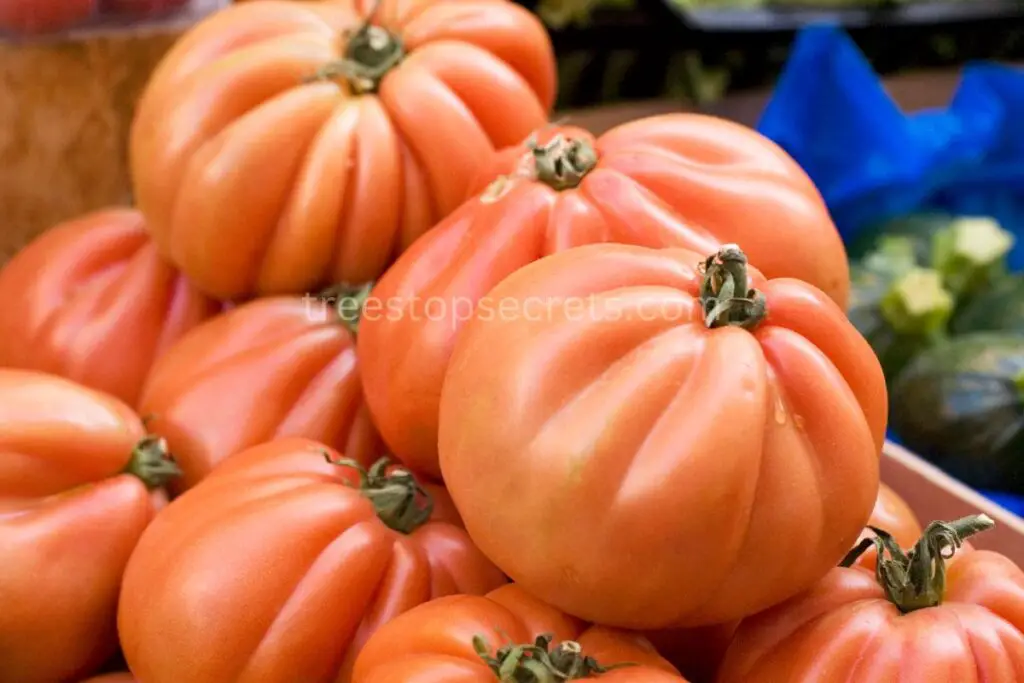
Ripeness Indicators
When growing beefsteak tomatoes in pots, it's crucial to know when they're ripe for harvesting. Look for a deep, rich color, usually red or orange, depending on the variety. The tomato should feel firm but slightly give when gently squeezed.
A ripe beefsteak tomato will also have a sweet aroma that intensifies as it ripens. Another indicator of ripeness is the texture; it should be smooth and glossy with no green tint around the stem. Observe the skin – if it starts to wrinkle slightly, then it's likely ready to be harvested.
Be mindful of pests and diseases mentioned earlier as some may cause premature ripening or damage to the fruit. Regularly inspect your plants for any signs of infestation or infection that could affect the quality of your harvest.
Harvesting Method
To harvest your beefsteak tomatoes grown in pots, use sharp garden shears or scissors to snip them from the vine carefully. Avoid pulling or twisting them off as this can damage both the fruit and plant. Hold onto the tomato with one hand while cutting its stem with the other.
It's best to pick tomatoes when they are fully ripe for optimal flavor and sweetness. However, if you anticipate unfavorable weather conditions like heavy rain or frost, consider picking them just before full maturity and allowing them to finish ripening indoors.
After harvesting, handle your tomatoes gently to prevent bruising or puncturing their skin which could lead to spoilage during storage.
Storage Tips
Once harvested, store your beefsteak tomatoes at room temperature until they reach peak ripeness if not already there upon picking. Placing unripe tomatoes on a windowsill can help speed up this process due to exposure to natural light and warmth.
For longer-term storage after reaching peak ripeness, keep your homegrown beefsteak tomatoes in a cool (not cold) place away from direct sunlight such as a cellar or pantry shelf with good air circulation.
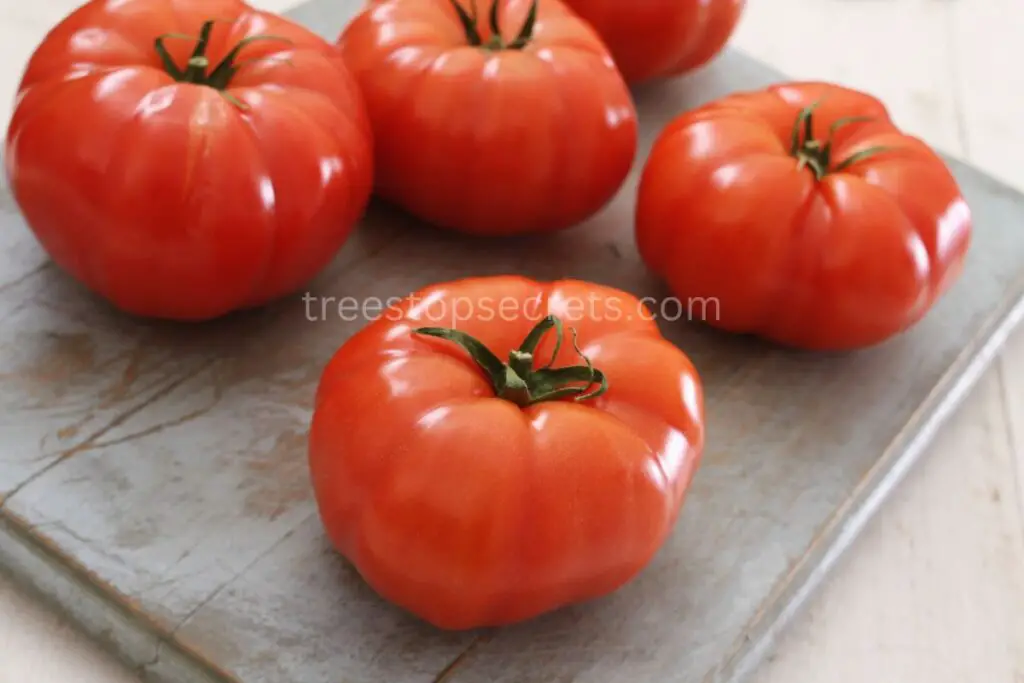
Avoid storing them in plastic bags which can trap moisture leading to mold growth; instead opt for breathable containers like paper bags or cardboard boxes lined with newspaper.
Remember that refrigeration diminishes their flavor so only resort to this method if you cannot consume all your harvest within a few days.
Troubleshooting Tips
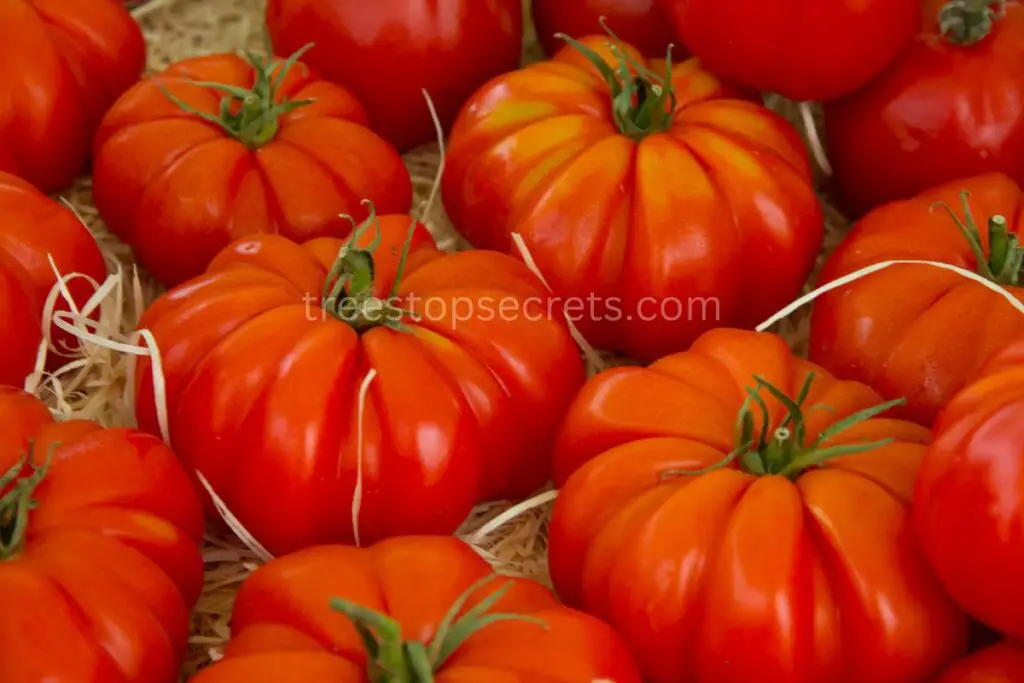
Yellow Leaves
If you notice yellow leaves on your beefsteak tomato plant, it could be a sign of various issues. One common cause is overwatering. Ensure that the soil is well-draining and allow it to dry out slightly between waterings. Another reason for yellow leaves might be nutrient deficiency, particularly nitrogen. Consider using a balanced fertilizer to address this issue. Furthermore, check for pests like aphids or spider mites, as they can also cause yellowing of the leaves.
Sometimes, extreme temperatures can lead to yellowing of the leaves too. If your potted tomatoes are exposed to excessive heat or cold, it may result in leaf discoloration. To prevent this, consider moving the pots to a more suitable location with better temperature conditions.
Blossom Drop
Blossom drop occurs when the flowers of your beefsteak tomato plants fall off before producing fruit. This can happen due to stress from high temperatures or inadequate pollination. To prevent blossom drop caused by high temperatures, provide shade during peak sunlight hours and ensure consistent watering.
Inadequate pollination may occur if there's limited airflow around your potted tomato plants or if there's a lack of bees and other pollinators in the area where they're kept outdoors. You can gently shake the plants daily when flowering begins to encourage natural pollination.
Cracking Fruit
The occurrence of cracking fruit in beefsteak tomatoes often results from fluctuations in watering levels—irregular watering patterns lead to inconsistent growth rates within the fruits' skin layers causing them to crack as they expand rapidly after sudden hydration following periods of drought.
To avoid cracking fruit, maintain regular and even moisture levels by adhering strictly but not excessively (avoid waterlogging)to an appropriate schedule based on weather conditions and pot size—larger pots usually require less frequent watering compared with smaller ones.
Conclusion
You've now mastered the art of growing beefsteak tomatoes in pots. With the right container, nutrient-rich soil, ample sunlight, and proper care, you're well on your way to enjoying a bountiful harvest of juicy tomatoes. Remember to keep an eye out for pests and diseases, provide sturdy support as they grow, and savor the fruits of your labor when it's time to harvest. Now, go get your hands dirty and let those green thumbs work their magic!
Frequently Asked Questions
How much sunlight do beefsteak tomatoes need?
Beefsteak tomatoes require at least 8 hours of direct sunlight daily. Place them in a spot where they can soak up the sun, such as on a sunny patio or balcony.
What size pot is suitable for growing beefsteak tomatoes?
Choose a large pot with a minimum diameter of 18 inches and depth of 24 inches to provide ample space for the deep root system of beefsteak tomato plants.
How often should I water my potted beefsteak tomatoes?
Water your potted beefsteak tomatoes deeply when the top inch of soil feels dry. Ensure proper drainage to prevent waterlogging, which can lead to root rot.
What are common pests and diseases that affect beefsteak tomatoes?
Keep an eye out for pests like aphids, hornworms, and whiteflies. Diseases such as early blight and blossom end rot can also impact your plants if not managed properly.
When is the right time to harvest beefsteak tomatoes?
Harvest your beefsteak tomatoes when they are fully colored but still firm to the touch. This ensures optimal flavor and texture for your homegrown produce.
Image Source: Paid image from CANVA

